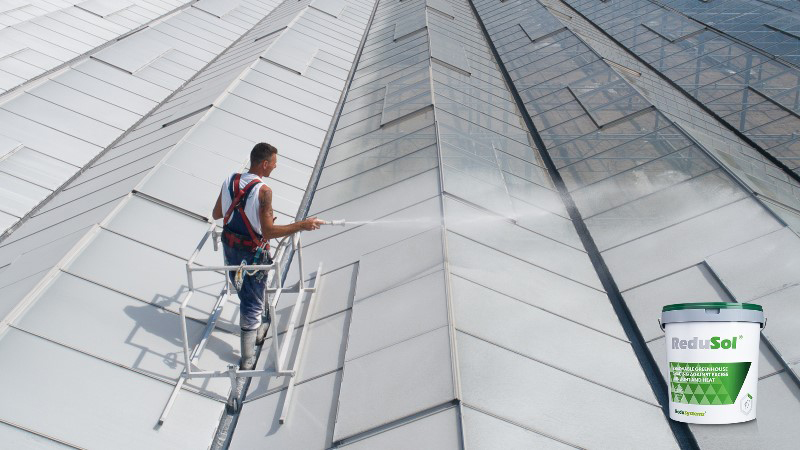20 Greenhouse Disease Resources Just a Click Away
 Controlling the spread of diseases in the greenhouse is a concern every year. The good news is, there are a wide range of resources available online to help you deal with them. We’ve compiled a list of just a few of them, including guides and recommendations from university researchers, product manufacturers, consultants, and more.
Controlling the spread of diseases in the greenhouse is a concern every year. The good news is, there are a wide range of resources available online to help you deal with them. We’ve compiled a list of just a few of them, including guides and recommendations from university researchers, product manufacturers, consultants, and more.
University Resources
- Each year, Michigan State University Extension updates its insect and disease management recommendations for the next greenhouse season. These recommendations are updated yearly to reflect efficacy of pesticides as MSU Extension specialists and their nationwide colleagues perform research trials evaluating the products against common greenhouse pests or diseases. The pesticides are evaluated by a network of researchers involved in the IR-4 Project, a research group that facilitates the labeling of pesticides on specialty crops, including greenhouse crops.
- University of Massachusetts offers a list of best management practices for disease control, including a checklist of safety tips, cultural practices, airflow and humidity control, and soil treatment.
- Proper greenhouse sanitation is important for healthy, disease-free vegetable transplant production. Efforts need to be made to keep transplant production greenhouses free of unnecessary plant debris, soils, and weeds that may harbor pests and disease. Rutgers University has information on transplant production and treatment of flats and trays.
- The New England Vegetable Management Guide is intended to assist commercial producers by providing information on production techniques and pest management. The guide highlights management practices that will reduce disease in greenhouses and high tunnels, including the use of resistant varieties, sanitation, fungicides, and cultural practices that keep the humidity below 90%.
- Want information on diseases targeting specific crops? Cornell University has you covered at its Greenhouse Horticulture site, with a closer look at more than 20 crop categories, as well as advice for timely concerns such as impatiens downy mildew.
Supplier Resources
- Greenhouse product distributor Advancing Alternatives offers tips on building a greenhouse disease management program, starting with identifying your most vulnerable crops. The site also offers advice on using automation to prevent greenhouse disease infestations.
- OHP’s Literature page features chemical class charts, crop-specific solutions, and suggestions on disease control in the landscape.
- Syngenta’s GreenCast online site allows growers to search for a wide range of foliar, crown/stem, and root diseases. Each page within includes a breakdown of susceptible crops, symptoms, and management recommendations.
- Need updates on nursery diseases? A Hort Corner video from SePRO features Dr. Ann Chase of Chase Agricultural Consulting discussing how to spot diseases, the difference between bacterial and fungal diseases, and the some solutions to combat them and ensure you grow high-quality plants.
- Battling diseases is hard enough. But when fungicide resistance enters the picture, the battle gets even more challenging. Understanding how to identify resistance, why it occurs, and how to prevent it can go a long way in prolonging the efficacy of your current fungicide program. Learn more in a crash course from Bayer.
YouTube
It’s not always easy to find credible information via social media, but here are three videos worth checking out.
- In a webinar from September 2020, Dr. Cheryl Smith, Extension Professor and Plant Health Specialist with University of New Hampshire Extension, discusses cultural and chemical management options for the most common and troublesome diseases of spring greenhouse crops, including several disease management products included in the New England Greenhouse Floriculture Guide.
- As part of a Texas A&M University AgriLife Greenhouse and Nursery Webinar series, Dr. Ann Chase made a presentation on integrated disease management in greenhouse production.
- Marrone Bio Innovations features biological experts Steve Bogash and Dr. Matthew Brecht of Marrone Bio Innovations and Alex Traven, Head Grower of Peace Tree Farms in Kintnersville, PA, sharing best practices for scouting and managing common diseases in greenhouse crops.
Training
In several states, a certified pesticide applicator may supervise one or more noncertified individuals performing application activities. Some of those states and tribes allow noncertified applicators to use Restricted Use Pesticides. The Certification & Training Rule for pesticide applicators was revised in 2017 and will go into effect between 2022 and 2024, depending on your local jurisdiction. The Pesticide Educational Resources Collaborative collection is a resource for trainers throughout the U.S.
E-GRO
e-GRO (Electronic Grower Resources Online) is a collaborative effort of floriculture specialists to create a new online clearing house for alerts about disease, insect, environmental, physiological, and nutritional disorders being observed in commercial greenhouses. Here are five recent disease-focused updates.
- Leaf spot, powdery mildew, and Myrothecium crown rot in pansy, from Jean Williams-Woodward at the University of Georgia
- Root Rot in Garden Mums, from Nora Catlin at Cornell University
- White Mold on Coleus, from W. Garrett Owen, Nicole Gauthier, and Julie Beale at the University of Kentucky
- Scouting and Treatment of Gray Mold in Greenhouse Crops from Michigan State University’s Mary Hausbeck, Blair Harlan, Nikki Lukasko, and Heidi Lindberg
- A Review of Plant Disease Resistance (Catlin)
From the Greenhouse Grower Archives
Last year, we offered a closer look at 10 of the worst greenhouse plant disease problems. Growers who scout thoroughly and know their crops well enough to spot the first signs of a plant disease developing will have the greatest likelihood of curtailing its impact on crop quality and yield.










